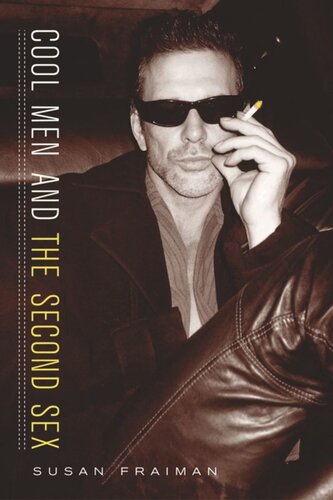

Most ebook files are in PDF format, so you can easily read them using various software such as Foxit Reader or directly on the Google Chrome browser.
Some ebook files are released by publishers in other formats such as .awz, .mobi, .epub, .fb2, etc. You may need to install specific software to read these formats on mobile/PC, such as Calibre.
Please read the tutorial at this link: https://ebookbell.com/faq
We offer FREE conversion to the popular formats you request; however, this may take some time. Therefore, right after payment, please email us, and we will try to provide the service as quickly as possible.
For some exceptional file formats or broken links (if any), please refrain from opening any disputes. Instead, email us first, and we will try to assist within a maximum of 6 hours.
EbookBell Team

4.3
48 reviewsFraiman assesses the work of various contemporary male figures—"bad boy" innovative filmmakers Quentin Tarantino, Brian De Palma, and Spike Lee and such "celebrity" professors as Edward Said, Andrew Ross, Henry Louis Gates Jr., and Lee Edelman—all of them on the left. She argues that despite their hipness—or because of it—these men consistently relegate women to the margins and feel free to ignore the insights of feminist scholars. Fraiman discusses movies like Pulp Fiction and Do the Right Thing, as well as other popular forms from pornography to rap music.
Academic superstars Andrew Ross, Edward Said, and Henry Louis Gates Jr. Bad boy filmmakers Quentin Tarantino, Spike Lee, and Brian de Palma. What do these influential contemporary figures have in common? In Cool Men and the Second Sex, Susan Fraiman identifies them all with "cool masculinity" and boldly unpacks the gender politics of their work.
According to Fraiman, "cool men" rebel against a mainstream defined as maternal. Bad boys resist the authority of women and banish mothers to the realm of the uncool. As a result, despite their hipness—or because of it—these men too often feel free to ignore the insights of feminist thinkers. Through subtle close readings, Fraiman shows that even Gates, champion of black women's writing, and even queer theorists bent on undoing gender binaries, at times end up devaluing women in favor of men and masculinity.
A wide-ranging and fair-minded analysis, Cool Men acknowledges the invaluable contributions of its subjects while also deciphering the gender codes and baring the contradictions implicit in their work. Affirming the legacy of second-wave feminist scholars and drawing as well on the intersectional work of third-wavers, Cool Men helps to reinvent feminist critique for the twenty-first century.